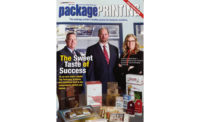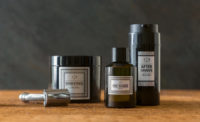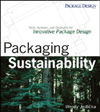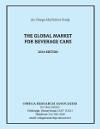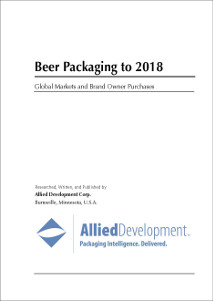Brand loyalty is diminishing. The consumer-to-product connection is exploding. In today’s consumer marketplace, the majority of buying decisions are being made at time of purchase, influenced more by how the product speaks to the customer and draws them in than anything else. And clearly the loudest voice customers are hearing comes from the packaging.
Increased competition from so-called “artisanal” manufacturers, consumer acceptance of private-label (house) brands and diminishing product differentiation are all impacting brand loyalty. Large brand owners are working to retain buyers with brand extensions and multi-branding within categories, causing the number of SKUs to explode. Thus, brand owners are looking harder at their packaging options, right down to the choice between printed labels applied to the packaging using pressure-sensitive adhesives (PSA) and those printed directly on the package. Both options propagate a vast number of decisions about which adhesives and coatings to use.
Selection Criteria
Both labeling choices can be printed by rotogravure, flexographic (flexo) and digital. Rotogravure typically produces higher print quality but is higher cost compared to flexo. Both techniques are commonly used for long, high-volume runs. Digital printing is an emerging print technology for narrow web labels and flexible packaging, increasingly the choice for short print runs.
Digital printing uses toner in lieu of printing plates, which allows for faster changeover times. Flexo presses are gaining ground in this area, as changeover times are declining, making it an increasingly viable option for short runs and to meet speed-to-market demands. Digital allows for a more cost-effective approach to customize packaging for specific marketing campaigns, another tactic for developing a relationship between consumer and product.
While visual impact and consumer appeal is important in choosing applied versus direct-print labeling, converters and brand owners must understand the complex interactions that take place between the components of the label, including inks, primers, coatings, film and adhesives. The chemical and physical interactions of these components — or the lack thereof — can ultimately determine if a package is in or out of compliance, and it can directly impact consumer safety. Critical questions include:
- How is the label being used in the packaging scheme?
- How does the label need to perform on the package?
- What is the typical storage and in-store selling environment? (i.e., wet, refrigerated, etc.)
- Will the label be in direct or indirect contact with the product inside package?
- Is the packaging substrate a true “functional barrier” in the specific conditions for use for which the packaging is intended?
Applied Labels
Every packaged product we touch is labeled, whether it’s with an applied label or is directly printed. Applied labels are printed and then applied to the package containing the product. There are many touch points with an applied label. Typically, the printing of the label and the application are done at different facilities. The printer receives label stock with an adhesive already applied, typically a water-based, pressure-sensitive adhesive.
Applied labels can be either printed then coated with an overprint coating or lamination to protect or enhance the ink. Specialty overprint coatings are often used to enhance the graphics and boost consumer appeal. These include matte, soft touch, raised image or other tactile finishes.
Applied labels have limited real estate to deliver messaging – both promotional messages and those required by regulation. Information required by the U.S. Food and Drug Administration (FDA) includes nutritional, intended use and ingredients, and thus demands a certain amount of label space. Extended booklet-type applied labels are commonly used for products that have extensively regulatory information or for those that include preparation or use instructions.
Traditional PSA labels are clearly the choice in certain situations, such as:
- Semi-rigid packaging
- Tamper-resistant packaging (i.e., medicines)
- Branding/customizing stock packaging
- Direct-printed labels
Printing directly onto rigid containers, such as glass or plastic bottles, has been utilized for decades and has now made its way to flexible packaging. In most cases, the films used to convert the pouch are printed, then laminated and finally converted to the finished package. A finished, printed package can be supplied to the packager ready to be filled. This means there are typically fewer steps, less handling and less shipping for direct-printed packaging than those with PSA labeling.
Printed package labeling offers numerous benefits. It frequently offers more real estate to deliver messages. It offers a graphically appealing package. Since most pouches are reverse printed, near photo-quality graphics are enhanced with a shiny film. An overprint varnish cannot offer the same distinctness of image.
There are some cases where specialty overprint coatings, similar to those used on applied labels, are used to attract the consumer. Soft-touch coatings offer a leathery, smooth feel that is appealing to the consumer, encouraging them to purchase the product.
Innovations in coating primers have expanded printing options for flexible packaging in two key ways. First, they can improve the quality and coverage of inks on familiar substrates, allowing for more complex, colorful or detailed graphics. Second, they may make it possible to print on new and novel substrates, opening a world of possibilities for brand owners and designers.
Primer functionality, however, is specific, particularly when used with digital inks. Primers – as well as coatings and adhesives – should be considered for use only with input from experts. All components should be tested for migration and safety compliance using appropriate FDA guidelines and analytical practices.
Both applied labels and direct-printed packages have a place on the shelves. The decision is likely driven by the brand and how the product is best packaged.
Ashland
(866) 514-8898
www.ashland.com


